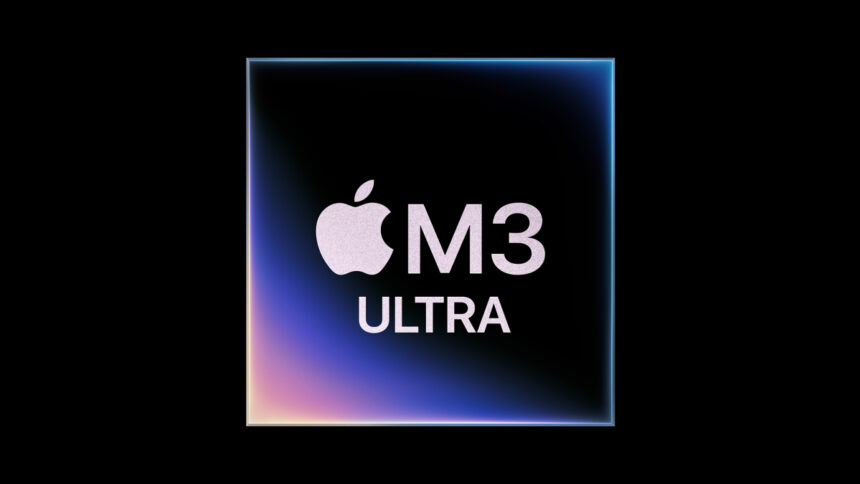Apple Unveils the Mighty M3 Ultra in Latest Mac Studio
This week marked an exciting moment for Apple enthusiasts with the unveiling of the striking sky blue M4-powered MacBook Air. However, the spotlight also shone on the introduction of the most formidable Apple silicon desktop processor to date—the M3 Ultra, designed to power the latest Mac Studio.
Beginning with the introduction of the M series, Apple has rolled out several variations of its chipsets. The journey started with the base processor, followed by the Pro, Max, and eventually the Ultra. With every new model, performance has seen remarkable enhancements. We have now reached the M4 Max and the M3 Ultra, showcasing Apple’s commitment to delivering powerful computing capabilities.
When preordering through Apple, customers can select either the M4 Max or the M3 Ultra for their new Mac Studio. It’s worth noting that the advantages of the M3 Ultra are mirrored in its pricing, as its starting cost is approximately twice that of the M4 Max configuration. For detailed pricing options, check out the Mac Studio page.

Credit: Apple
What’s particularly intriguing is that the M3 Ultra operates fundamentally as two M3 Max processors combined, a feat accomplished through a method known as UltraFusion. This design essentially doubles performance—a staggering 184 billion transistors are used within this chip.
Numerous Cores for High Performance
Delving deeper into specifications, the M3 Ultra boasts up to 32 CPU cores (an increase from the 24 cores of its predecessor, the M2 Ultra). It also features up to 80 GPU cores (up from 76 on the M2 Ultra), retains 32 neural cores from its predecessor, and supports an impressive 512GB of memory (previously 192GB with the M2 Ultra). Memory bandwidth also escalates to 819GB/s compared to 800GB/s with the earlier model. Altogether, this places performance around 1.5 times that of the Apple M2 Ultra.
Although the M2 Ultra serves as the foundation for the M3 Ultra, Mac Studio buyers will find themselves choosing between this new powerhouse and the M4 Max, which debuted last year alongside the refreshed MacBook Pros. The M4 Max provides up to 16 CPU cores, alongside 40 GPU cores, 16 neural cores, support for 128GB of memory, and memory bandwidth reaching 546GB/s.
One of the standout features of the M3 Ultra is its support for extensive RAM—over half a terabyte. This capacity empowers users to operate robust AI models directly on their machines. For instance, a Mac Studio outfitted with the M3 Ultra can effectively run applications such as DeepSeek R1 independently, without the need to rely on remote servers.

Credit: Apple
Furthermore, the M3 Ultra comes equipped with Thunderbolt 5, which amplifies data transfer speeds to 120Gb/s, double that of Thunderbolt 4. This enhancement enables the possibility of interconnecting multiple Mac Studios, given the necessary financial investment. Additionally, the display system in the M3 Ultra can manage over 160 million pixels, comparable to operating eight Pro Display XDRs simultaneously.
According to Johny Srouji, Apple’s Senior Vice President of Hardware Technologies, “The M3 Ultra represents the zenith of our scalable system-on-a-chip design, specifically crafted for users engaging with the most demanding and bandwidth-intensive applications.” Learn more about the M3 Ultra.
As for the anticipated M4 Ultra, Apple has been relatively quiet. It has hinted, however, that the next generation might not include an Ultra variant, as conveyed to Ars Technica. If this turns out to be true, the M4 lineup would be unique in lacking an Ultra option. Given that these high-performance chipsets cater to a niche group of users with substantial needs and budgets, infrequent launches could be a pragmatic approach.












